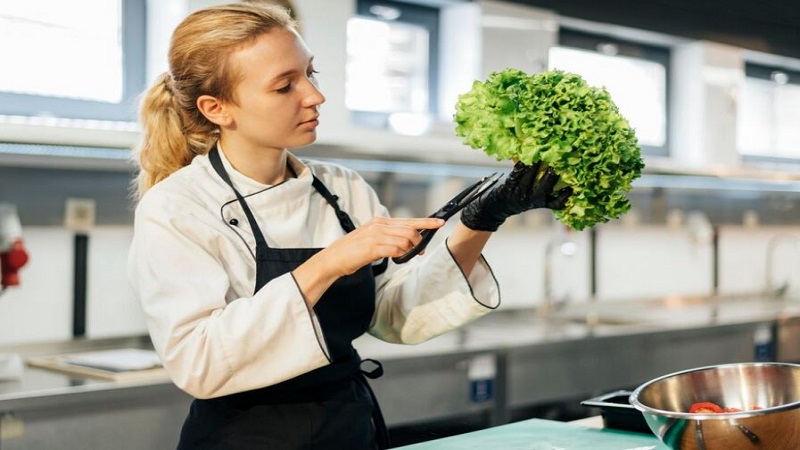In an era marked by growing environmental awareness, restaurants are not only expected to deliver delicious meals but also to uphold sustainable practices. This extends beyond sourcing local and organic ingredients—sustainability must permeate every aspect of operation, including cleaning processes. Implementing eco-friendly cleaning solutions, provided by a reputable cleaning company, not only minimizes environmental impact but can also enhance a restaurant’s brand and attract conscientious consumers. Here, we delve into how restaurants can revolutionize their hygiene routines by embracing sustainable cleaning practices.
The Impact of Traditional Cleaning
Before diving into sustainable alternatives, it’s essential to understand the environmental footprint of conventional cleaning methods. Many traditional cleaning products contain harsh chemicals like phosphates, chlorine, and ammonia, which can cause significant environmental damage. These substances can contaminate waterways, harm aquatic life, and contribute to the depletion of the ozone layer. By shifting towards greener cleaning practices, restaurants can drastically reduce their ecological footprint while ensuring the safety and health of both employees and guests.
Starting with the Basics: Eco-Friendly Products
Choosing the right products is the foundation of sustainable cleaning in the restaurant industry. By opting for greener alternatives, establishments can ensure a safer environment for both staff and customers.
Choosing Green Cleaning Agents
The first step towards sustainable cleaning is selecting eco-friendly cleaning products, as highlighted on the www.adrianacleaning.com/ website. These are typically made from natural ingredients and are biodegradable, meaning they break down naturally without leaving harmful residues. Products certified by reputable organizations such as Green Seal or EcoLogo meet strict environmental standards and are an excellent choice for conscious establishments.
Fun Fact: Did you know?
Interestingly, many traditional cleaning ingredients can be replaced with everyday items such as vinegar, baking soda, and lemon juice, which are effective natural cleansers and deodorizers.
Advanced Techniques: Energy-Efficient Equipment
By adopting advanced technologies, restaurants can significantly lower their energy consumption and water use, aligning their operations with sustainability goals.
Investing in Eco-Friendly Machinery
Using energy-efficient cleaning equipment is another crucial aspect. Items like low-water dishwashers and steam cleaners not only use less energy but also reduce water consumption significantly. For instance, an ENERGY STAR-certified commercial dishwasher can save up to 1,300 gallons of water per year.
The Benefits of Microfiber
Switching to microfiber mops and cloths can further enhance a restaurant’s sustainability efforts. Microfiber requires less water and cleaning solution than traditional cotton or paper products and captures more dirt and microbes, leading to a cleaner and more hygienic environment.
Engaging the Team: Training and Awareness
Successful implementation of sustainable practices hinges on thorough training and widespread awareness among all team members.
Building a Green Team
Sustainable practices are most effective when the entire team is on board. Conducting regular training sessions to educate staff on the importance of eco-friendly cleaning practices and how to implement them can foster a culture of sustainability. Staff engagement not only ensures consistency in practice but also empowers employees, making them active participants in the restaurant’s environmental goals.
Fun Fact: A collective effort
It’s estimated that if every restaurant in the U.S. switched to sustainable cleaning practices, it could save millions of gallons of water and reduce cleaning chemical use by tons annually.
Beyond the Surface: Waste Reduction and Recycling
Adopting a holistic approach to sustainability involves looking beyond immediate cleaning needs to address comprehensive waste management practices.
Implementing Comprehensive Recycling Programs
While cleaning is a primary focus, waste management also plays a pivotal role in a restaurant’s environmental impact. Establishing a robust recycling program for glass, paper, and plastic can dramatically reduce waste. Additionally, composting organic waste not only lowers garbage output but can also be used as a rich natural fertilizer for gardens, including those that might supply the restaurant.
Reducing Plastic Usage
Reducing the use of plastic, especially single-use plastic in cleaning tasks, is another essential step. Opting for reusable bottles and containers for cleaning products can significantly cut down plastic waste.
Wrapping It Up: Continuous Improvement
The journey towards full sustainability is ongoing and requires continuous effort and improvement. By setting clear, measurable goals and regularly reviewing their progress, restaurants can not only comply with green standards but also set new benchmarks in the industry. Embracing eco-friendly cleaning practices offers a significant opportunity for restaurants to lead by example, demonstrating that good business practices can go hand in hand with environmental stewardship.
In conclusion, as the demand for sustainable dining options grows, restaurants that adopt and promote eco-friendly cleaning and waste management practices not only contribute positively to the environment but also enhance their market position and customer loyalty. With every small step, the industry moves closer to a more sustainable and environmentally responsible future.
